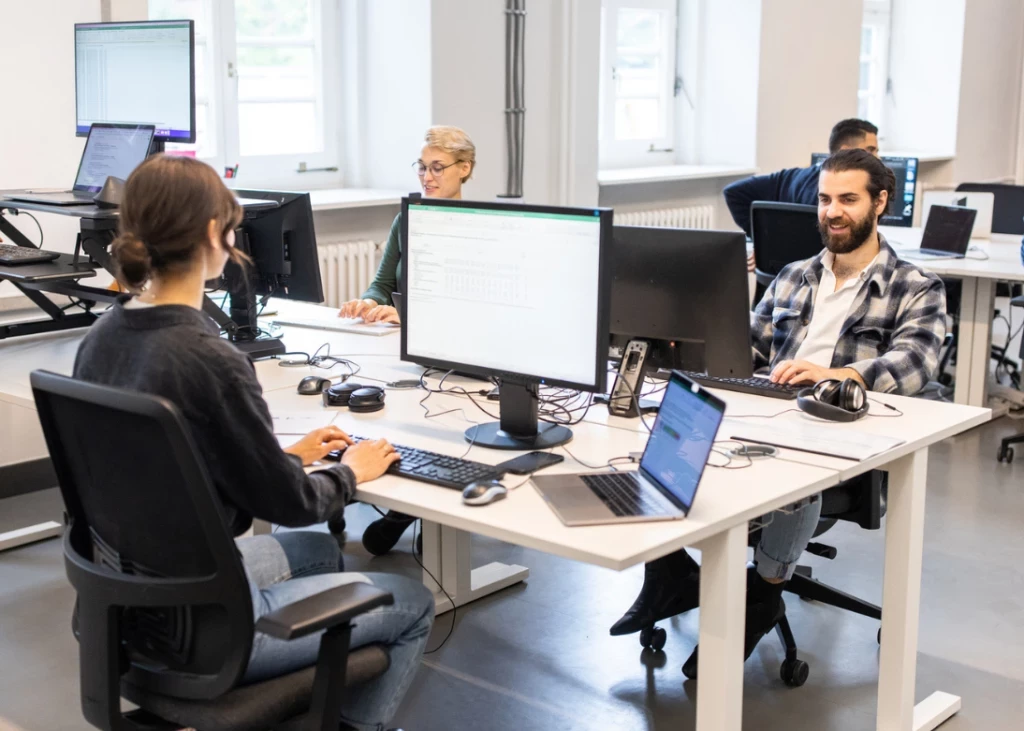
Everyone has had to adjust their working routines in either a remote or hybrid world. We used to meet in person in the corner conference room or share important tidbits in the elevator. Today, we must be more intentional about connecting and sharing information. This no longer occurs due to happenstance.
Some of us have worked for our organizations for several or many years and are well connected: We know who to go to for what and how to connect with them; we know the styles of various leaders; we know and live the company values, and we know how to navigate our organization.
Think about joining a new organization during these times. Maybe you are starting in a new company in 2021. How would you help someone get acclimated on every level–as a team member or as a manager–within the organization and its culture?
When we joined, we, most likely, attended an in-person orientation, had lunch with our manager, met our team face-to-face and maybe even got to meet and hear from one or more leaders of the company.
Conference rooms, in-person events and even the elevator aren't a possibility right now. So, how does someone new to the organization connect with others, learn their job, build relationships, understand values and philosophies all from their own home office?
New Hires
Onboarding Program Strategies
We've all learned a few new ways to help engage and provide learning opportunities lately, and helping new hires to integrate into the organization is no exception. Below are a few tactics to create a productive and engaging new hire experience.
- Virtual Orientation. Moving your traditional orientation program wholesale to live, virtual may be difficult. Our current environment is actually a great time to re-visit the effectiveness of your orientation program. Some include having several department delegates equipped with PowerPoint slides talk about who they are and what they do. While the content is helpful, it can be overwhelming on day one. Going virtual allows broad access to the same event and spurs us to decide what content (and experience) really needs to be shared on day one. Keeping it short, interactive and light on content is a good way to go to help those just walking in the door.
- Checklists, Journeys and Roadmaps. Providing a documented journey for new hires becomes even more critical in a remote world. Onboarding is more than day one; usually, the first 90 days can represent a full onboarding experience while some companies designate the first year as for onboarding. Spreading out actions, learning, connection/networking events and even job-related activities over 90 to 365 days ensures the new hire can spend time to get acclimated and be successful. Try sharing a visual roadmap of activities for new hires to follow. Even better is to create a curriculum or package of learning and engagement activities where new hires can earn badges along the way. When a new hire can see and be rewarded for progress, that can be the motivation to keep going.
- Direct Managers. We tend to focus on the new hire in an Onboarding Program, but the hiring manager shouldn't be ignored. A new hire’s manager is essential to ensuring a new hire feels welcome, understands the role and how they will be measured, who they should connect with and how they will be successful. Providing training and live events for managers to connect with experts on how to onboard new hires provides managers education and a chance to connect with others who have onboarded during these times.
- Onboarding Buddies. The hiring manager may not be able to be the sole support of a new hire. Ensuring a Buddy is assigned to each new hire helps that person have a guide to the organization. Now, more than ever, we need to connect new hires to as many people as possible, and having someone other than their manager be a reliable go-to person can help them feel included and supported. Buddies should be accessible, reliable and have access to answers. Having a resources site and/or training for Buddies to understand their role and provide answers to common questions can help them be a better guide.
- Leader Connect. One item that can get missed in a remote environment is ensuring new hires get exposure to the leaders of the organization who can speak to culture and strategy. Setting up live, virtual sessions for new hires to connect to a leader even monthly can help them feel more connected. This leader can tell a personal story, give a glimpse into strategy, describe their area of responsibility and share how a new employee can be successful. A simple 30-minute connect with time for Q&A can go a long way. Can’t get your leaders’ time? Try a video or podcast of leaders to at least share this information one-way.
- New Hire Community. In these remote times, connecting peer to peer can help new hires build relationships. New hires are a group of people that have something in common–being new. Communities seek to connect people together over something common–a problem, a client, a role, an area of interest, etc. Not every new hire may opt-in to participate in a new hire community but having the opportunity to connect with those new to the organization gives them something in common from the start. They can ask each other questions, share stories, learn about other areas of the business and give each other advice. The community can be enabled multiple ways through tools like Yammer, Facebook, LinkedIn, Teams, Intranet, SharePoint site and/or even through live, virtual calls. There is no wrong way to connect new hires but find a mechanism that works within your parameters.
- Coffee Chats. Another more informal way to connect new hires to others is to enable something like a coffee chat, virtual meet-and-greet or even a concept called flash mentoring where two people get connected one time on a specific topic to share knowledge. Technology is essential here to ensure people can find one another and connect. For new hires, the hiring manager or Buddy should have it as an expectation to help new hires connect to others for this type of informal meet-and-greets.
We've always tried to create an engaging new hire experience. Creating this without the ability to meet face-to-face can be challenging. Of course, global companies have been challenged with this for years as not everyone works together in the same office anymore. The same rules apply here, except you're not connecting offices, you're connecting individuals and teams.
Thanks to technology and a little creativity, we have ways of connecting new hires and setting them up for success. Even more, we need to spend time creating roles and infrastructure to ensure our new hires have a successful and productive onboarding experience.


























